2015 February Monthly Report
Highlights
February started off with high wind warnings for the Southcentral on the 5th. Gusts up to 96 mph were measured in Thompson Pass and 75 mph at the Palmer Airport. Multiple power outages were reported to Matanuska Electric Association and some property damage was reported in Valdez. The same day, hurricane force wind warnings were issued in the Southeast, perhaps for the first time ever for the Upper Lyn Canal, and gusts up 140 mph were measured at Sheep Mountain. The next day, winds were topped out at 114 mph at Eldred Rock near Juneau. Some power outages were reported and the ferry Aurora canceled some trips. High winds were followed by snow, and Juneau received 7.6" over the 7th and 8th. Petersburg received a total of 14.5" of snow on the 6th, while Hyder reported 21". All the new snow allowed the Eaglecrest ski area to reopen on the 14th. On the 8th the Klondike Highway was closed due to high winds and blowing snow.
The Nenana Ice Classic officials noted that the Tanana River at Nenana had not completely frozen over until mid-January, very late compared to normal, and is currently at its second lowest thickness on record for beginning of February. The Denali Park Road was expected to be open to mile 12 by the 14th. The Tustumena 200 sled dog race, originally rescheduled for February 21st, was canceled due to lack of snow. By the 19th, the Eaglecrest Ski Area had only been open 30 days for the season. The wind and rain during mid-month has increased the avalanche danger around Turnagain Pass area considerably. In Fairbanks, the Open North American Championship sled dog race officials decided to move the March race start from downtown out the Musher's Hall due to concerns about the river ice. The Official restart of the Iditarod Sled Dog Race, also in March, was moved from Anchorage to Fairbanks for the second time in the race's history.
Another ice storm on the 21st made traveling conditions hazardous on the Southcentral and Interior roads, and travel advisories were issued. Snow and light rain was forecast for the Interior while Denali Park had a winter warning for up to an inch of freezing rain. Blizzard and storm warnings were issued for much of the northern and western portions of the State. The Fairbanks Airport canceled several flights on the night of the 21st, with others diverted to Anchorage. The resulting icy roads created very hazardous driving conditions on the 22nd, and the Fairbanks North Star Borough closed several facilities and more travel advisories were issued. The weather delayed the start of the Ice Art Championships. The poor road conditions led to the closure of schools in the Fairbanks area on the 23rd, including the University. More freezing rain fell on, but mostly to the east of Fairbanks, and the winter weather advisory was continued for this area.
The morning of the 24th witnessed two lightning strikes within Nome that accompanied a snow shower. This ÔThundersnow' is a rare occurrence.
Another storm warning for high winds and snow was issued for the Interior on the 26th, with arrival on the afternoon of the 28th. Backcountry travel was not advised. Warnings were also issued for Western and Northern Alaska. Travel advisories were issued on the 28th for the Dalton Highway with blizzard conditions and gusts up to 60 mph. The Steese Highway was closed to high winds and drifting snow. The highest gust at the Fairbanks Airport was 50 mph and the storm left 2.6" of new snow. Point Thompson topped out at 76 mph; 56 mph was reported at Kuparuk and 43 mph at Barrow. Kaktovik, on Barter Island just off the North Slope, was hard hit, but the wind instrument failed during the storm. Residents reported it was dangerous to go outside during the storm. Power was knocked out and many residents sheltered in the village school. Snowdrifts abounded in the town after the storm. Some residents had to dig their way out of their houses.
The unusual weather has a silver lining in that the Municipality of Anchorage noted it had saved roughly $1 million on snow removal for the winter to date.


